GE JV656VWW Handleiding
Bekijk gratis de handleiding van GE JV656VWW (4 pagina’s), behorend tot de categorie Afzuigkap. Deze gids werd als nuttig beoordeeld door 33 mensen en kreeg gemiddeld 4.5 sterren uit 17 reviews. Heb je een vraag over GE JV656VWW of wil je andere gebruikers van dit product iets vragen? Stel een vraag
Pagina 1/4

Use and Care & Installation Guide
Convertible Range Hood
Models: JV356 30″
JV656 36″
Write Down the Model and Serial Numbers.
The Model and Serial Numbers are on a label on the
back wall of the hood and on the Consumer Product
Ownership Registration Card that came with your hood.
Before sending in this card, please write these numbers here:
Model Number
Serial Number
IMPORTANT SAFETY INSTRUCTIONS
Read and save these instructions.
WARNING—TO REDUCE THE RISK OF FIRE,
ELECTRIC SHOCK, OR INJURY TO PERSONS,
OBSERVE THE FOLLOWING:
A. Use this unit only in the manner intended by the
manufacturer. If you have questions, contact the
manufacturer at the address or telephone number
listed in the warranty.
B. Before servicing or cleaning unit, switch power
off at service panel and lock service to prevent
power from being switched on accidentally. When
the service disconnecting means cannot be locked,
securely fasten a prominent warning device, such
as a tag, to the service panel.
C. Installation work and electrical wiring must be done by
qualified person(s) in accordance with all applicable
codes and standards, including fire-rated construction.
D. Sufficient air is needed for proper combustion and
exhausting of gases through the flue (chimney) of fuel-
burning equipment to prevent backdrafting. Follow the
heating equipment manufacturer’s guidelines and safety
standards such as those published by the National Fire
Protection Association (NFPA), and the American
Society for Heating, Refrigeration and Air Conditioning
Engineers (ASHRAE), and the local code authorities.
E. When cutting or drilling into wall or ceiling, do not
damage electrical wiring and other hidden utilities.
F. Ducted fans must always be vented to the outdoors.
G. To reduce the risk of fire, use only metal ductwork.
H. This unit must be grounded.
WARNING—TO REDUCE THE RISK OF A
RANGE TOP GREASE FIRE:
A. Keep fan, filters and grease-laden surfaces clean.
B. Always turn hood ON when cooking at high heat.
C. Don’t leave range unattended when cooking.
D. Use high settings on range only when necessary.
Heat oil slowly on low to medium setting.
E. Always use cookware and utensils appropriate for the
type and amount of food being prepared.
• When flaming foods under the hood, turn the fan on.
WARNING—TO REDUCE THE RISK OF INJURY
TO PERSONS IN THE EVENT OF A RANGE TOP
GREASE FIRE, OBSERVE THE FOLLOWING:
A. SMOTHER FLAMES with a close-fitting lid, cookie
sheet, or metal tray, then turn off the burner. BE
CAREFUL TO PREVENT BURNS. If the flames do
not go out immediately, EVACUATE AND CALL
THE FIRE DEPARTMENT.
B. NEVER PICK UP A FLAMING PAN—You may be
burned.
C. DO NOT USE WATER, including wet dishcloths or
towels—a violent steam explosion will result.
D. Use an extinguisher ONLY if:
1. You know you have a Class ABC extinguisher,
and you already know how to operate it.
2. The fire is small and contained in the area where
it started.
3. The fire department is being called.
4. You can fight the fire with your back to an exit.
*Based on “Kitchen Firesafety Tips” published by NFPA.
CAUTION—For general ventilating use only. Do not use
to exhaust hazardous or explosive materials and vapors.
If You Need Service…
• Do not attempt to repair or replace any part of your
hood unless it is specifically recommended in this
guide. All other servicing should be referred to a
qualified technician.
SAVE THESE INSTRUCTIONS
GE Appliances
164D2966P165-2

2
Venting
This hood must be vented vertically through
upper cabinets or horizontally through an outside
wall. Ductwork is not included.
Improper duct sizing or restrictive roof caps
reduce air moving capacity and will not provide
enough ventilation for an indoor electric grill.
Indoor electric grills produce more smoke than
normal cooking and require at least 410 CFM to
provide adequate ventilation.
Follow the guidelines for proper duct sizing in the
ducting charts. The venting system mustNOTE:
exhaust to the outside.
Cabinet Height
For most efficient operation, the top of the hood should
be approximately 66 (167.6 cm) from the floor.″
Non-Venting
Follow the instructions under “Vented Installation” for
wiring and mounting. Omit the ductwork preparation.
Install WB13X5008–Charcoal filter pads replaceable.)
Tools Required:
• Drill; 11⁄4″wood bit. • Pliers.
• Flat blade screwdriver. • Pencil, ruler and level.
• Saber saw or keyhole saw.
• Caulking, metal snips, duct tape, ducts (with
elbow and transition, if necessary) and wall cap
or roof caps, as required.
INSTALLATION INSTRUCTIONS
Installing the Range Hood
Determine which direction the vent will be
installed (top or rear).
1. Remove filters and motor/light cover (3 screws).
2. Remove the blower motor by removing the
“packing screw” and the clip on the retainer bar.
Discard the clip and screw.
Unplug the motor from the junction box.
Snap the blower retainer
bar toward the rear of
the hood to release the
blower. Remove the
blower.
3. Remove the junction
box cover.
Remove the selected wiring knockout and duct
knockout from the top or rear of the hood. Use a
at blade screwdriver to cut the tabs.
IMPORTANT: OBSERVE ALL GOVERNING
CODES AND ORDINANCES.
SAVE THESE INSTRUCTIONS FOR THE
LOCAL ELECTRICAL INSPECTOR’S USE.
WARNING: Disconnect power before servicing or cleaning the unit.
Care of Filter Care of Exterior Surfaces Charcoal Filter Pads
(not included)
For greatest eciency the aluminum
lter should be cleaned periodically.
To remove the lter, pull the tab to
the side and then down. Soak it in hot
water and detergent. Rinse and dry
thoroughly before replacing.
Use a mild detergent to clean the hood.
DO NOT use abrasive cleansers.
Lights
This hood has two lights. Do not use
bulbs larger than 75 watts. There are
two light levels. To change light
bulbs, rst remove the lters. It is not
necessary to remove the blower cover.
This lter should be inspected
periodically and, when it becomes
saturated, it should be replaced. There
are no eective means of reactivating
this lter. Order WB13X5008.
Top Vent
Knockout
Snap
lock blower
retainer bar
Vent-less operation discharge vent

HORIZONTAL VENTING
(If the wall cap has a damper, do not install the
damper blade on the hood.)
Attach the damper with the small sheet metal
screws (#8 x 1/4 ).″
Check the damper
for free operation.
Open the damper
blade to
approximately 80
degrees.
Position the blower for horizontal discharge. The
air ow arrow on the blower should point to the
rear vent opening.
When the blower is in position, snap the blower
retainer bar toward the front into the indent.
Reattach the plug into the junction box.
8. Lift the hood into position and feed the house
wiring through the wiring knockout.
Slide the hood back against the wall.
Tighten the mounting screws. Be sure the screw
heads are in the narrow neck of the keyhole slot.
9. Complete the electrical wiring in the wiring
box according to National Electrical Code and
local codes.
NOTE: This hood must be permanently
grounded.
10. Replace the junction box cover and blower
assembly.
Reattach the plug into the junction box.
Install light bulbs (not supplied with the hood).
Reattach bottom motor/light cover and lters.
11. Installation is complete. Turn on the power.
VERTICAL VENTING
(If the roof cap has a damper, do not install the
damper blade on the hood.)
Attach the damper with the small sheet metal
screws (#8 x 1/4 ).″
Check the damper
for free operation.
Open the damper
blade to
approximately 80
degrees.
Position the blower for vertical discharge. The
air ow arrow on the blower should point up
towards the vent opening.
When the blower is in position, snap the blower
retainer bar toward the front into the indent.
Reattach the plug into the junction box.
Blower discharge
Air ow arrow
This surface
to rear
3″
5″
Damper blade
to front
This surface to top
Blower
discharge
3″
5″
Air ow arrow
Damper
blade to top
Damper
4. Use the hood as a template. Mark the
locations on the cabinet or wall for ductwork,
electrical wiring and keyhole screw slots.
Cut holes at marked locations for duct and
electrical wiring. For the vertical duct, cut out 3/4″
extra toward the front of the cabinet for movement
of the duct when installing the hood.
5. Run the electrical wires through the wall or
cabinet according to National Electrical Code
and applicable local codes.
NOTE: DO NOT turn the power on until
installation is complete.
6. Drive the screw partway
into the center of the
narrow neck of the keyhole
slots marked on the
cabinets.
7. Follow the directions for vertical or
horizontal venting.
NOTE: If the venting installation is NOT
correct, the blower will run at maximum RPM
regardless of the speed control setting.
When installing the blower housing, be
sure wires cannot contact the blower wheel.
Keyhole slot
in canopy
Screw
(supplied)
Damper
3
Product specificaties
| Merk: | GE |
| Categorie: | Afzuigkap |
| Model: | JV656VWW |
Heb je hulp nodig?
Als je hulp nodig hebt met GE JV656VWW stel dan hieronder een vraag en andere gebruikers zullen je antwoorden
Handleiding Afzuigkap GE

7 December 2024

30 November 2024
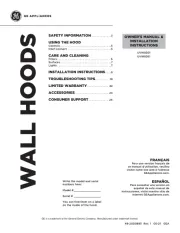
30 November 2024

15 November 2024

22 Maart 2024

22 Maart 2024

22 Maart 2024

22 Maart 2024

6 December 2023

6 December 2023
Handleiding Afzuigkap
- Gude
- Halifax
- Rosieres
- Freggia
- Adelberg
- Euro Appliances
- Roblin
- Steel Cucine
- German Pool
- Conia
- SEIKI
- Tesy
- Robinhood
- Westinghouse
- Premium Levella
Nieuwste handleidingen voor Afzuigkap
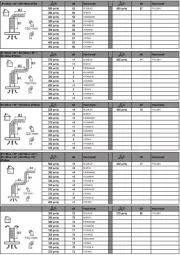
29 Juli 2025

29 Juli 2025

29 Juli 2025
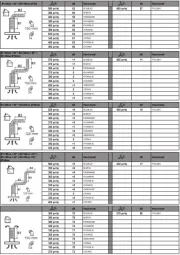
29 Juli 2025
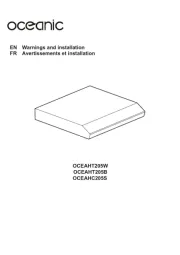
29 Juli 2025
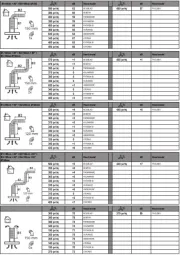
29 Juli 2025
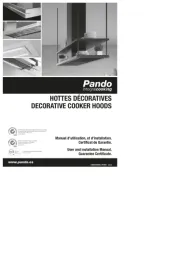
29 Juli 2025
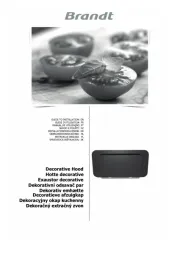
29 Juli 2025
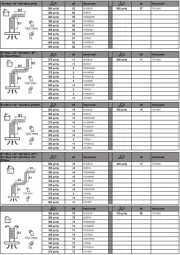
29 Juli 2025
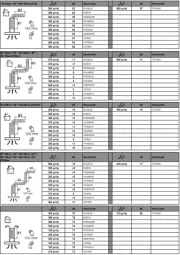
28 Juli 2025